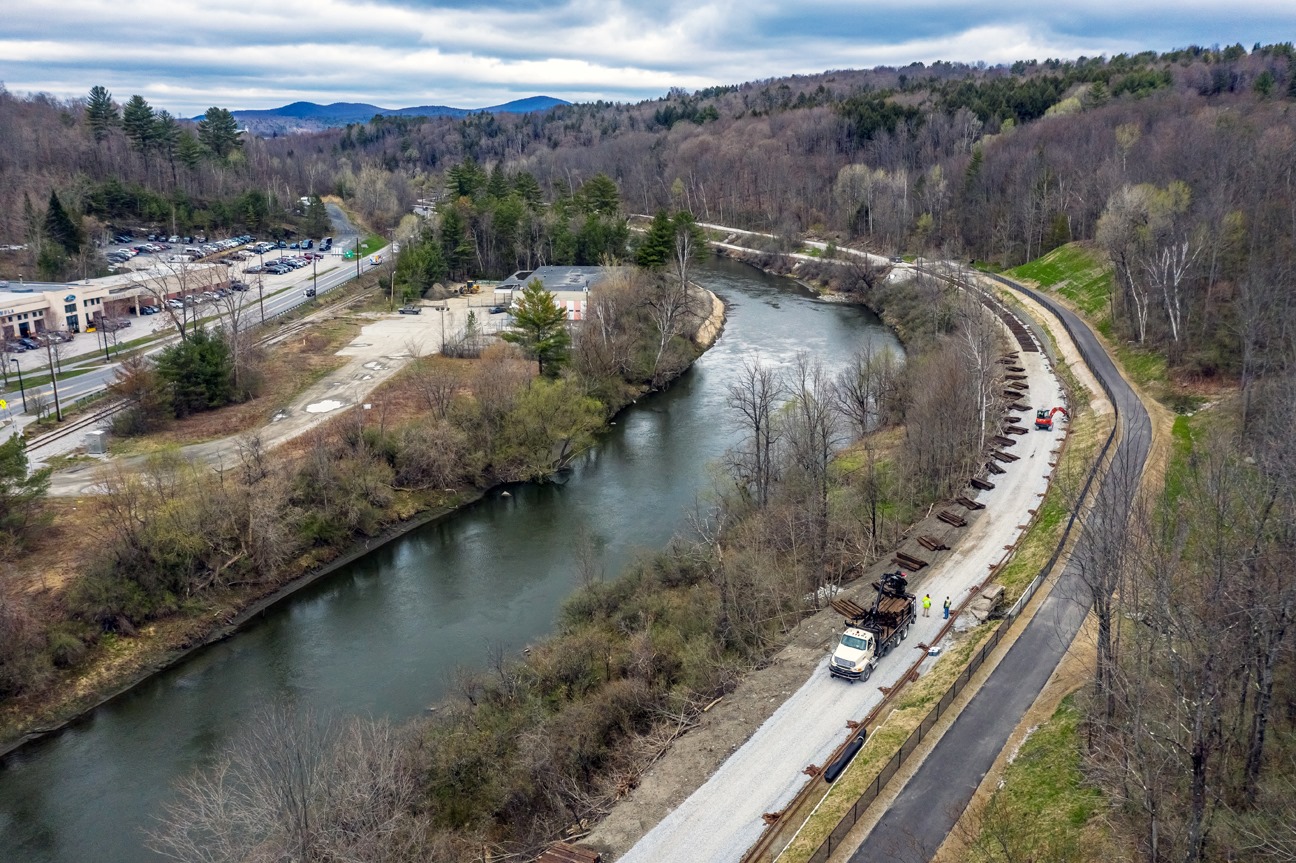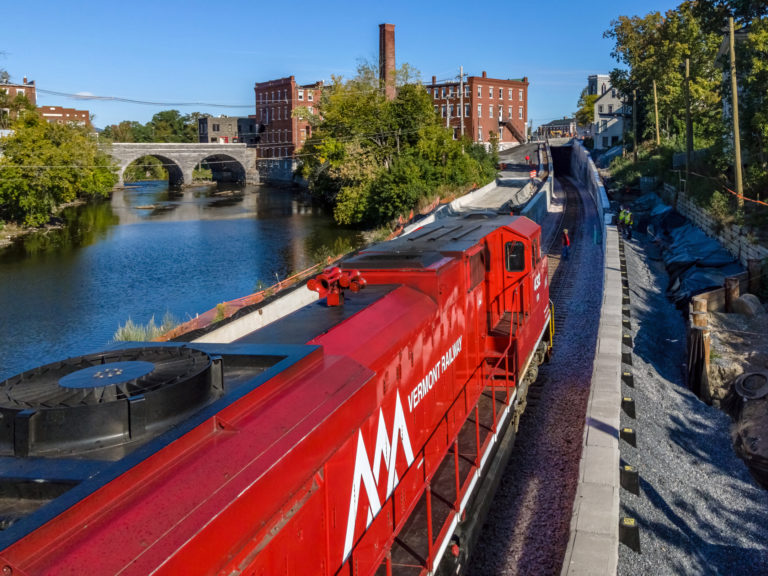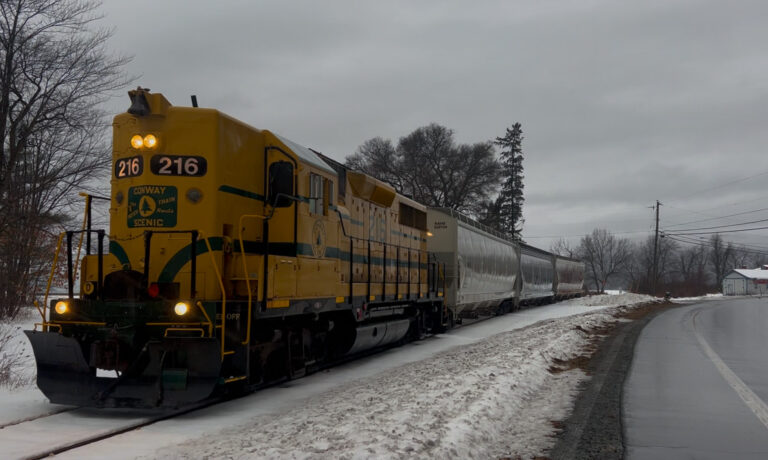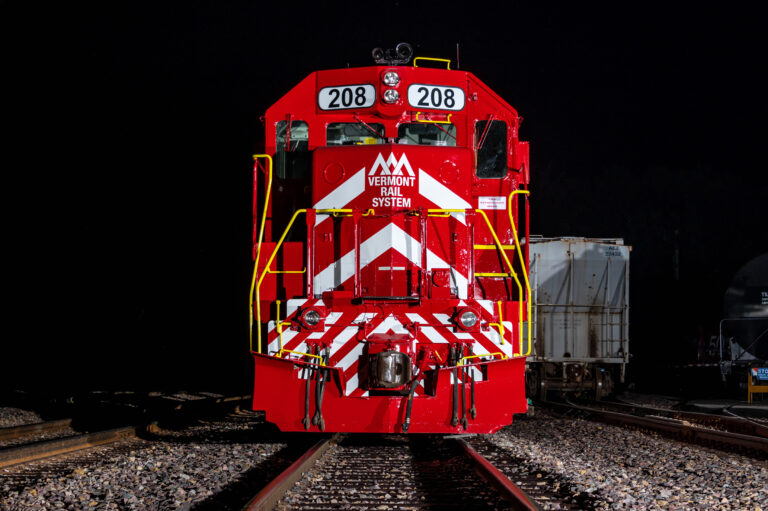Jonathan Budzyna /
CommunityReviving A Historic Route To Improve Service
Jonathan Budzyna /
CommunityThe Vermont Rail System’s continual investment in the state’s rail lines not only makes operations safer but also ensures that Vermont’s rail network is ideally positioned to provide competitive transportation solutions and ready to handle any future increases in traffic. An example of this is the railroad rehabilitation and relocation project in Montpelier on our Washington County Railroad line.
Over the course of 2020 the Washington County Railroad line between Montpelier Junction and Barre saw a significant increase in outbound rail traffic from the granite quarry in Barre. These unique shipments rely on rail to reach construction projects hundreds of miles away. However, during regular inspections of the rail line, it was found that two aging bridges over the Winooski River in Montpelier were going to require substantial rehabilitation, and possibly replacement, to allow them to continue to handle the weight of the increased rail activity.
Fortunately, a solution was found in a long-dormant parallel railbed located across the river from our active rail line. In the 1800s competing railroads would often build lines next to each other to reach a town, business, or interchange. In this case a nearly two-mile stretch of the former Montpelier and Wells River Railroad roadbed, last used in 1956, was built next to the ex-Central Vermont line we have been using for our operations. It avoids crossing the river entirely and will be relatively easy to connect to our existing track. Most importantly, by restoring that segment of the line, the two bridges and any future maintenance needs will be eliminated entirely.
Work on the project started with cleaning and grading the old roadbed. VRS track crews then began the process of laying out ties, tie plates, and spikes in preparation for the rail. Interestingly, many of the materials used in the project, like the ties and rails, were recycled, having been removed from mainline tracks but perfectly good for slow-speed branch lines like the Washington County. Final construction and the connection of the old line to the new occurred in the spring of 2021, with the first trains operating over the new route in June.
The fact that we were able to look to the option of reviving the dormant right-of-way illustrates how the State of Vermont has led the way in preserving rail infrastructure, both active and inactive, to provide transportation options for the future.





